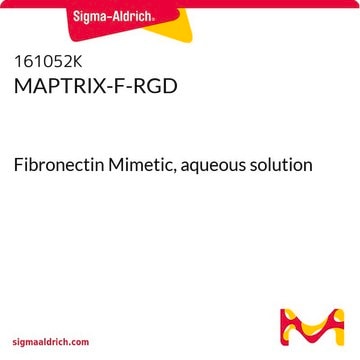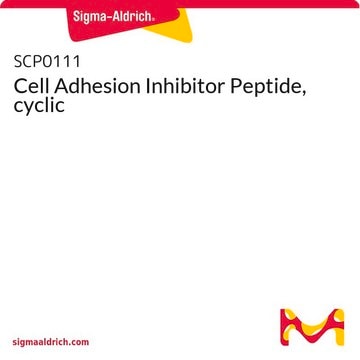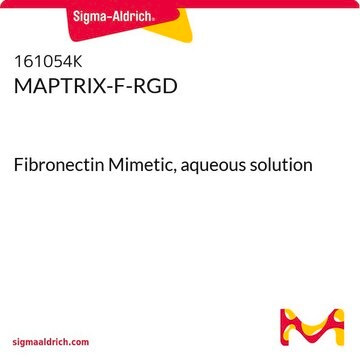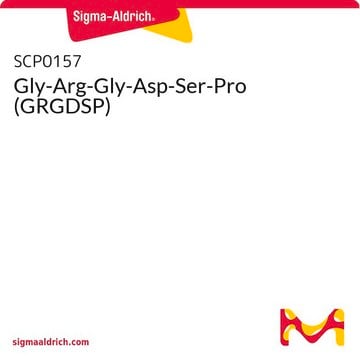TRUERGD
TrueGel3D RGD
Integrin Adhesion Peptide
Sinonimo/i:
3D cell culture matrix
About This Item
Prodotti consigliati
Condizioni di spedizione
dry ice
Temperatura di conservazione
−20°C
Descrizione generale
Applicazioni
Caratteristiche e vantaggi
*Doa : 8-amino-3,6-dioxaoctanoic acid
Componenti
Note legali
Codice della classe di stoccaggio
10 - Combustible liquids
Certificati d'analisi (COA)
Cerca il Certificati d'analisi (COA) digitando il numero di lotto/batch corrispondente. I numeri di lotto o di batch sono stampati sull'etichetta dei prodotti dopo la parola ‘Lotto’ o ‘Batch’.
Possiedi già questo prodotto?
I documenti relativi ai prodotti acquistati recentemente sono disponibili nell’Archivio dei documenti.
I clienti hanno visto anche
Articoli
TrueGel3D™ synthetic hydrogel can be used to study co-culture of tumor and stromal cells.
Fibroblasts that are present in the stroma secrete glycoproteins and polysaccharides to form extracellular matrix. They maintain the structural integrity within the connective tissue and play a key role in cancer, chronic obstructive pulmonary diseases, idiopathic pulmonary fibrosis, scleroderma and several other diseases.
Troubleshoot TrueGel3D™ hydrogel formation and cell viability issues with RGD-degradable polymer and CD cell-degradable crosslinker.
TrueGel3D™ is a synthetic hydrogels platform for 3D cell culture that aim to mimic the natural extracellular environment for more physiological culture conditions
Protocolli
TrueGel3D™ is a chemically defined hydrogel for 3D cell growth, facilitating microchannel filling with slow gelation.
TrueGel3D™ hydrogel enables cell encapsulation for 3D culture, mimicking native tissue environment with chemically defined properties.
An advanced protocol is available for TrueGel 3D kits for 3D cell culture for peptides concentration or stiffness optimisation
Il team dei nostri ricercatori vanta grande esperienza in tutte le aree della ricerca quali Life Science, scienza dei materiali, sintesi chimica, cromatografia, discipline analitiche, ecc..
Contatta l'Assistenza Tecnica.









